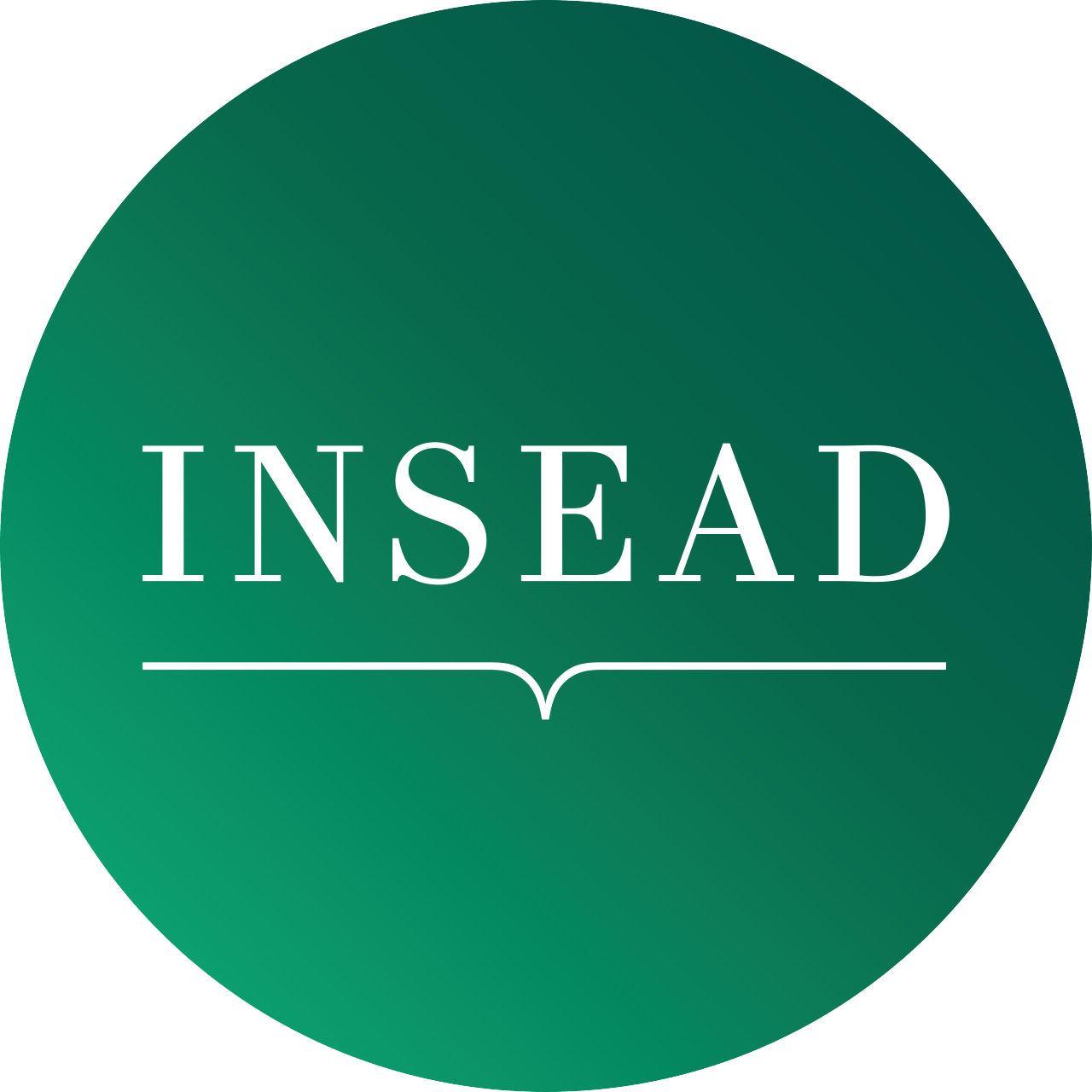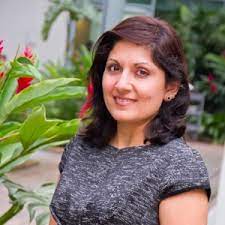A “Web of Solutions” for Reaching Gender Balance
What would a gender balanced world look like? We may not know for quite some time, which makes the more important question ”how do we forge a path towards gender balance?”
Positioned to have an international influence on gender diversity in leadership, INSEAD – one of the world's leading business schools (in 2022 their MBA Programme tied with Harvard to rank #3 worldwide in the Financial Times survey) and a PWN Global partner, understands where the challenges come from, and what strategies can be devised to meet these challenges.  In fact, INSEAD takes the task of reaching gender balance so seriously that in 2008 they created an initiative dedicated to it, called The Gender Initiative. The goal of INSEAD’s Gender Initiative, or IGI, is “to create a pipeline of business leaders who are equipped to drive gender balance within their existing and future organizations“. This means trying to increase the number of female leaders through their own recruiting, hiring, and educational efforts, and also making sure all other leaders – men as well as women - are aware of the actions they can take. In fact, INSEAD takes the task of reaching gender balance so seriously that in 2008 they created an initiative dedicated to it, called The Gender Initiative. The goal of INSEAD’s Gender Initiative, or IGI, is “to create a pipeline of business leaders who are equipped to drive gender balance within their existing and future organizations“. This means trying to increase the number of female leaders through their own recruiting, hiring, and educational efforts, and also making sure all other leaders – men as well as women - are aware of the actions they can take.
 Dr. Vinika Rao, Executive Director of the INSEAD Gender Initiative, sees gender balance as a “systemic web of problems, requiring a systemic web of solutions,” and she is very clear on the role that INSEAD can play. Dr. Vinika Rao, Executive Director of the INSEAD Gender Initiative, sees gender balance as a “systemic web of problems, requiring a systemic web of solutions,” and she is very clear on the role that INSEAD can play.
Before we get to the question of “how,” it is important to examine the “why.” Successfully communicating the benefits of gender balance will influence the resources businesses and governments dedicate to the cause, the specific goals they set, and how seriously the efforts are taken – reflected in how the goals are measured and the consequences of not reaching them.
For example, Dr. Rao describes how if women and minorities are not given an education, and especially if they are not given the chance to reach leadership roles, society loses at least half of the available talent and brain power. Additionally, the disparate interests of different genders have an impact on businesses, governmental policies, and the culture at large: if only one gender holds all the power and influence, the resulting policies and societal influences will likely only reflect the needs and requirements of that gender. This narrow view results in poorer education, health, and life expectancy outcomes for entire populations, worldwide.
Dr. Rao has insight into why the lack of gender balance is so persistent, and why initiatives often fail. Although research is ongoing, key reasons are related to gender wage gaps, lack of female networks, and unconscious biases. Dr. Rao describes how the lack of networks prevents women from knowing the people who can offer help when a job opportunity or promotion opens up, and how women often start to believe the unconscious biases they encounter.
For example, if women continually hear that they will not make it as a research scientist, they are likely to never apply for that job - even if they would love doing it, and, have the talent to be fantastic at it. Having never started in this line of work means they will never rise to leadership levels. Without female leaders in scientific fields, it is much less likely that issues that affect women will get the attention they need, leaving half of the world’s population unrepresented.
The gender wage gap is an especially pernicious one. There is a correlation between what a person is paid and the perception of their skills and competencies. For example, if a male and female have the same job title and same performance review, but the male is earning more, he is perceived as being worth more. When an opportunity for a promotion arises that both apply for, the male is more likely to get it, as he is thought to be better qualified based on his higher salary.
Dr. Rao outlined, using the acronym SAD, a framework for understanding why gender diversity initiatives often fail:
- Lack of Specifics
- Lack of Accountability
- Lack of Disclosure
What research has shown is that if there are no specific goals for reaching gender balance – and by this Dr. Rao means all genders – with specific KPIs that are tied to executives’ salaries (whether in business or government) and performance reviews, little will change.
Additionally, disclosure, or transparency, can play an enormous role in creating a culture of equality. Imagine if everyone knew exactly how much their peers were making – what is the likelihood that there would be a gender wage gap? Consider if large corporations had to disclose the gender of the nominees in their pipeline for future board members. Being held accountable for having a gender balanced pipeline increases the possibility of having a gender balanced board. In short, knowing what the present looks like makes the chances of shaping the future much greater.
INSEAD’s Gender Initiative, which is part of their larger diversity goals that are a founding principle of the university, aims to help solve these problems in several ways. One of the university’s key activities is research. INSEAD’s gender researchers include psychologists, sociologists, economists, and management and finance scholars. One goal is to understand the root causes of gender imbalance so that resources can be directed to where they will have the most impact. Another focus of the research is to understand how to empower women leaders to positively impact business and society, within and beyond their current organizations.
The research is of course only useful insofar as it is read and utilized; therefore, INSEAD is very strategic in disseminating its research. It is published in their journal, INSEAD Knowledge, as well as in other peer review journals; it is also included as part of their own curriculum. Additionally, they share the research in the form of case studies with other graduate schools, and they develop relationships with businesses and governments that can influence policies and culture.
On their website, you can find links to their research that have been published. This research is not just enlightening; when examined, it can offer strategies on how to overcome some of the challenges to reaching gender diversity. For example, in the paper titled Do Firms Respond to Gender Pay Gap Disclosure? the answer, as hinted at above, seems to be “yes.” Now, there is a clear tactic for reducing the wage gap.
INSEAD also seeks to actively spread the knowledge learned from their extensive research to a broader audience who cannot participate directly in one of their Programmes by putting on events and offering workshops and webinars. One Programme, designed for companies who want to reach gender balance in their organizations, is a 5-week Programme providing concepts and tools based on INSEAD’s research that helps them to develop a strategic and practical plan, while at the same time building a business case for change.
Another Programme works with major companies to create customized leadership development Programmes for their women executives. The backbone of this Programme is a model that takes women leaders through the following three steps:
- Understand what leaders do & their relationship to change
- Understand the barriers and enablers
- Understand how to turn knowledge into action.
INSEAD’s Gender Initiative also sees engaging with male leaders to leverage the power and influence they hold as a key approach to permanent change. Forming alliances with men can have a huge impact, as they often have a direct influence on the hiring and promotion of women, and can influence policies in the companies they work for, as well as the culture. As a result of these efforts, INSEAD has partnered with the UN’s HeForShe Programme, among others. The Dean of INSEAD, Ilian Mihov, has been a key male ally and played a strong role in helping them reach such organizations.
INSEAD’s actions for promoting gender balance can also be found close to home, within their own organization. They have specific goals for reaching gender balance on their Board, their faculty, and among the students in their degree Programmemes such as their Executive Master in Change, their Global Executive MBA as well as their Executive Master in Finance.
Dr. Rao listed INSEAD’s targets and the current status: the Board is targeted to be 50% female by 2023, and is currently at 40%; their flagship MBA Programme is targeted to be 40% female by the academic year 2024/2025, and continue increasing until parity is reached; the number of women in their Master in Management is currently at 40%, not far from their target of 50%.
To reach these goals they look closely at their pipelines for Board members and the composition of their junior faculty, as well as their recruiting methods for their MIM and MBA Programmes.
Dr. Rao, although using the acronym SAD to list the barriers to progress in reaching gender diversity, did not actually look sad herself, but rather determined and even optimistic. As she described the research, educational Programmes, and progress that INSEAD has made internally with their own Programmes, she appeared quite confident that INSEAD was playing a strong role in creating ‘a systemic web of solutions’, and she was smiling.
If you want to know more about how an INSEAD Degree Programmemes can help you achieve your professional goals and close the gender gap, you can email them, and they will be happy to assist you.
***INSEAD 2022 application deadlines***
1st August: Executive Master of Change (for European intake starting on 21st Sept)
6th September: Executive MBA (for European intake starting on 3rd November 3rd)
Date: July 2022
Author: Kathryn Nenning, PWN Vienna
Editor: Rebecca Fountain, Marketing Consultant, PWN Global |